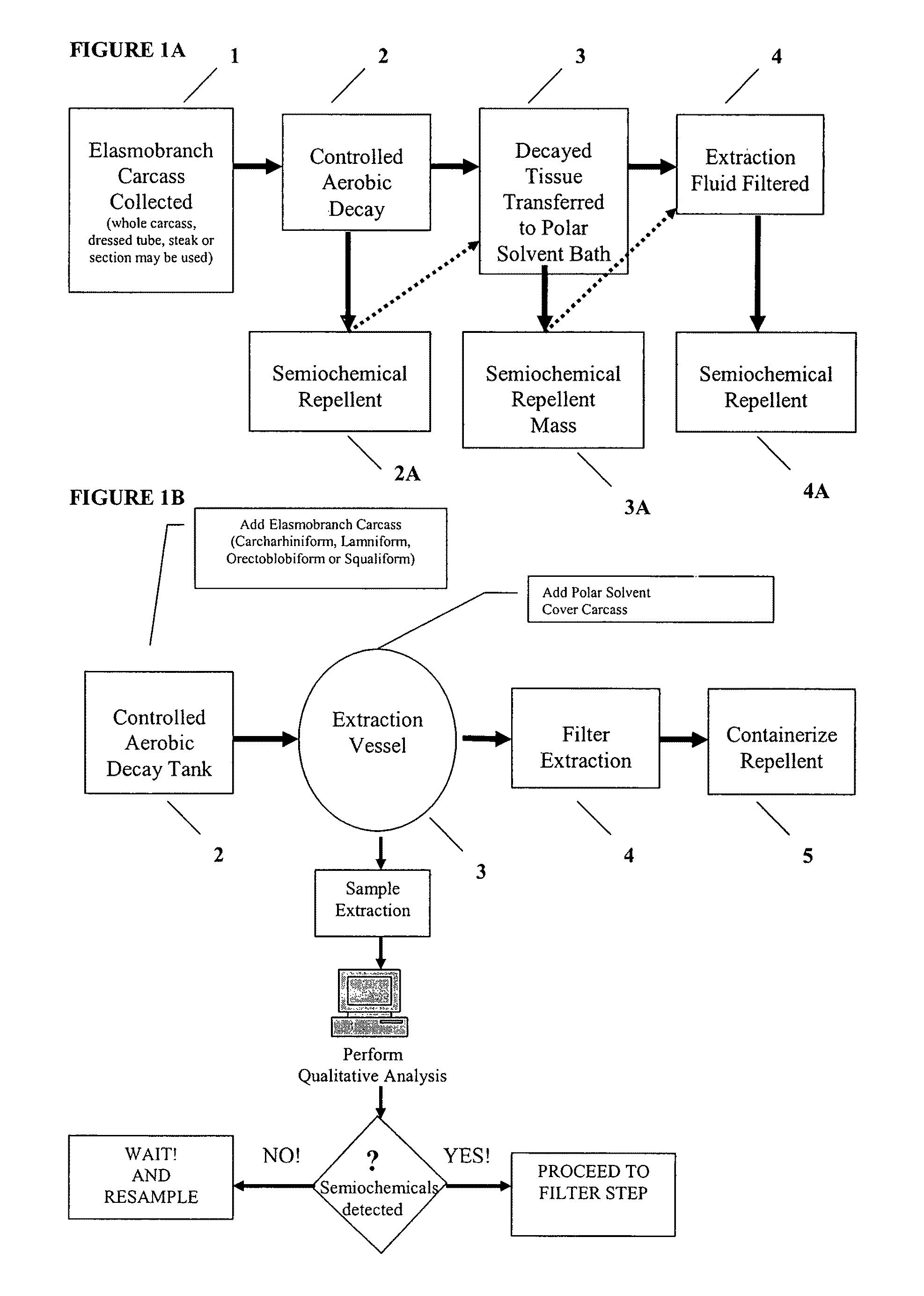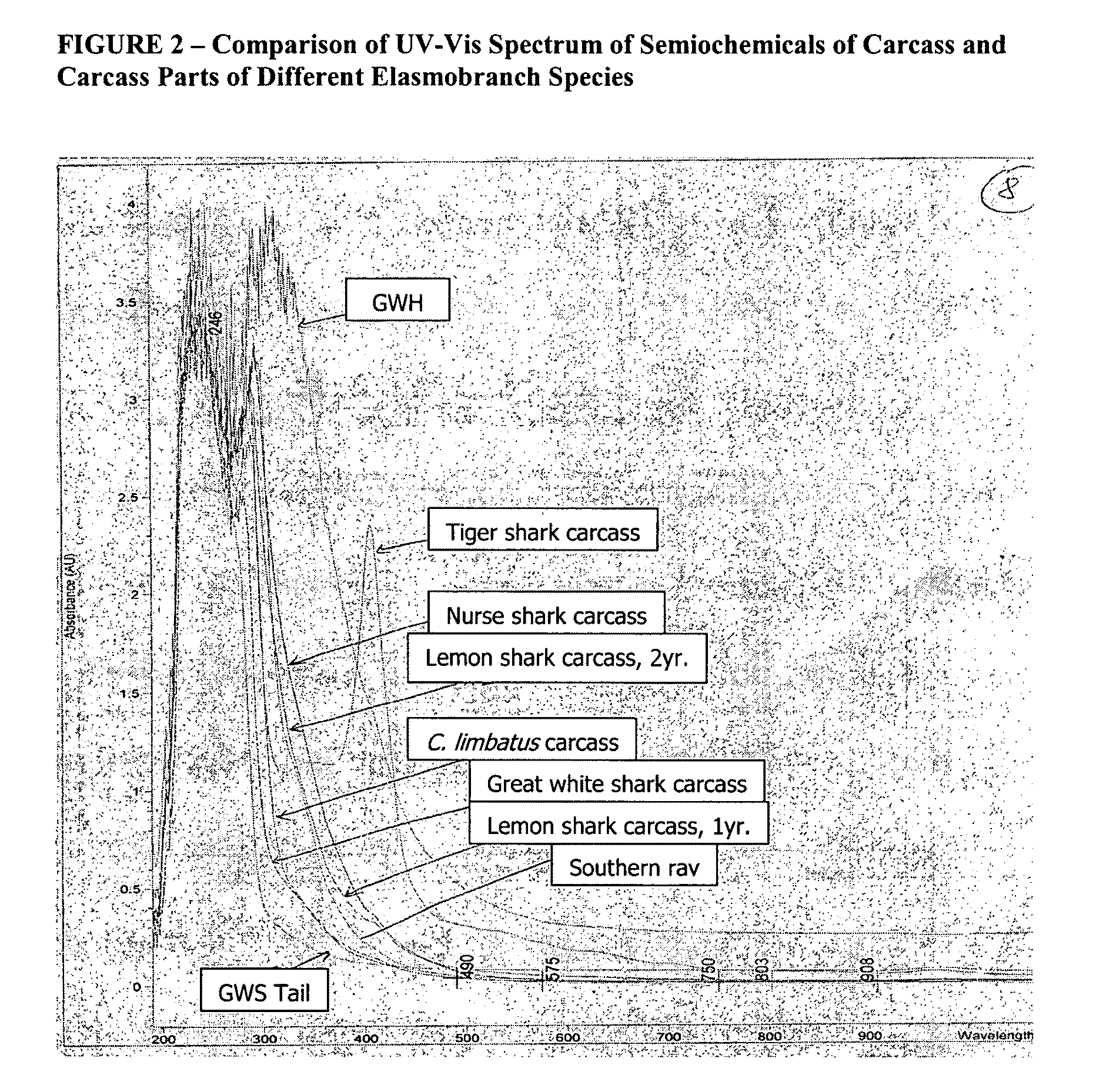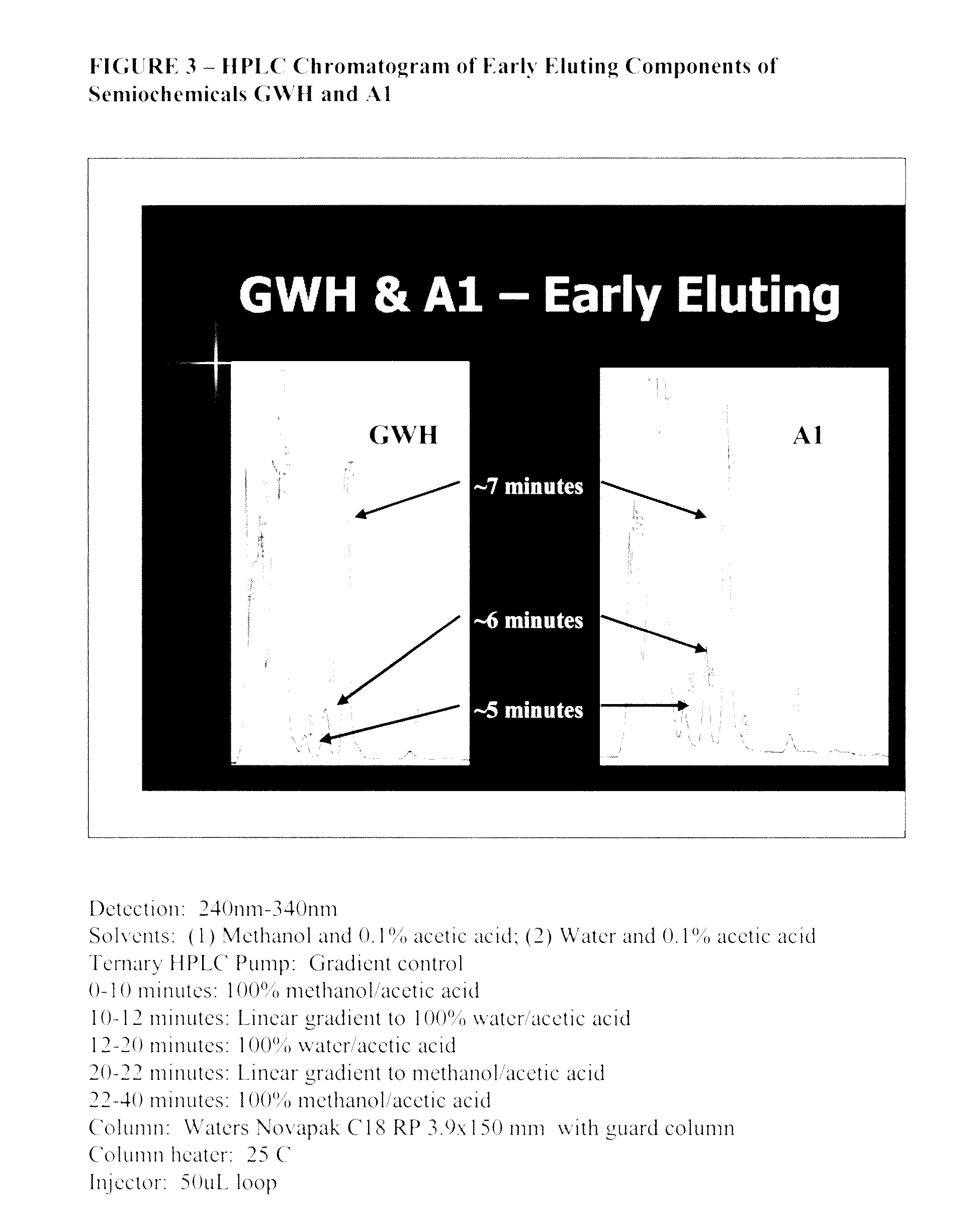Elasmobranch-repelling compounds, methods of use and devices
a technology of elasmobranch and compound, applied in the field of elasmobranch repellent compounds, methods of use and devices, can solve the problems of negative impact on their economies, no previously-developed chemical repellent has even come close to achieving the standard, and the loss of hooks, snoods and gangions is usually high
- Summary
- Abstract
- Description
- Claims
- Application Information
AI Technical Summary
Benefits of technology
Problems solved by technology
Method used
Image
Examples
example 1
Preparation and Testing of Semiochemical GWH
example 1a
Preparation of Semiochemical GWH from Order Lamniformes
[0230]GWH was aerobically prepared from the head of a great white shark (C. carcharias, Order Lamniformes) in a polypropylene extraction vessel. The carcass head was allowed to decay aerobically for 10 days in a covered polypropylene container. The carcass head was then fully immersed in solvent in a polypropylene extraction vessel. The extraction solvent was 50:50 water:solvent, by weight. The solvent was 80% methanol, 17% ethanol, and 3% methyl isobutylketone. Extraction time was 6 months at 25° C. with slow agitation (container was shaken or stirred during sampling intervals). The extraction was periodically sampled by HPLC in accordance with the above described method. After several months signature peaks were noted at about 5, about 6 and about 7 minutes. The extraction process was terminated by filtering to remove tissue. The resulting filtrate was containerized in a polypropylene container. Extraction time was 6 months at...
example 1b
Testing of Semiochemical GWH for Repellent Activity
[0231]GWH was tested for repellent activity against blacknose sharks (C. acronotus Order Carcharhiniformes) and Caribbean reef sharks (C. perezii Order Carcharhiniformes) present in a population of 9 sharks. The target sharks were stimulated with bait. A 500 mL dose of GWH was introduced to the shark population as a cloud. The sharks were visibly repelled from the feeding zone. (See Table 1).
PUM
 Login to View More
Login to View More Abstract
Description
Claims
Application Information
 Login to View More
Login to View More - R&D
- Intellectual Property
- Life Sciences
- Materials
- Tech Scout
- Unparalleled Data Quality
- Higher Quality Content
- 60% Fewer Hallucinations
Browse by: Latest US Patents, China's latest patents, Technical Efficacy Thesaurus, Application Domain, Technology Topic, Popular Technical Reports.
© 2025 PatSnap. All rights reserved.Legal|Privacy policy|Modern Slavery Act Transparency Statement|Sitemap|About US| Contact US: help@patsnap.com



